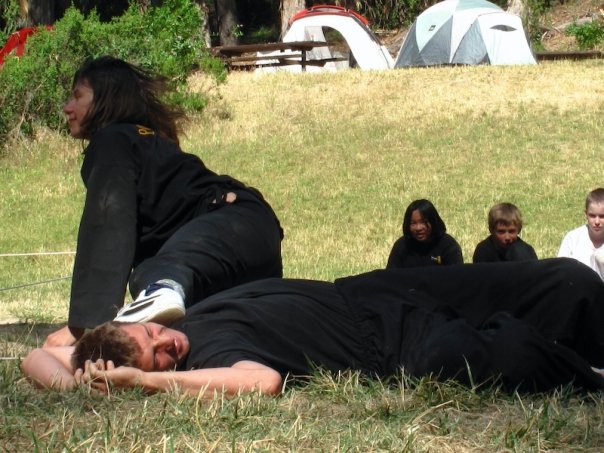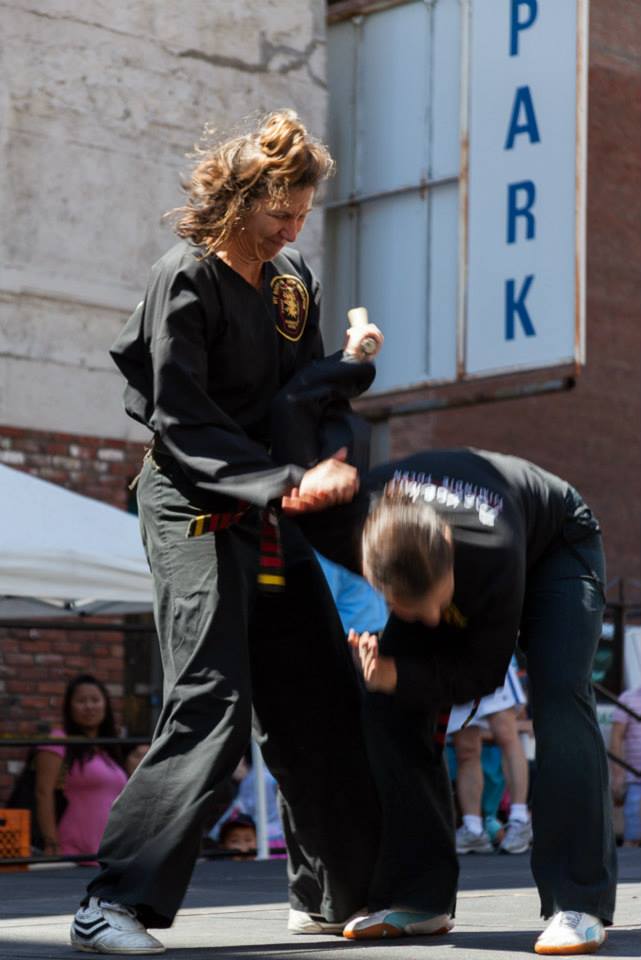-
Tulen Exercises for Strengthening and Healing the Lungs
Tulen Boston continues to train via Zoom and Skype! In fact, we have been offering training via Skype since 2013, when our now blackbelt Mas Zheng, moved home to Toronto from Boston. We now have students in Boston, Cambridge, Toronto, Sacramento, and Edinborough. Since energy is energy, the hard part isn’t training on Zoom, it’s the same as it is in person, putting yourself first enough to come to class.
For those of you who are at home and not yet training, we have something for you also. The video below takes you through the Dynamic Tensions, a short series of exercises designed to strengthen and heal the lungs. Dynamic Tensions teach you to breath fill each part of the lung, upper, middle, then lower, until you are filling the whole lung. These exercises and ongoing Tulen training retaught me as a young adult, who had allergic and exercise induced asthma how to breathe. They are great if you are recovering from a cold, know someone who is quitting smoking, or just want to take a few moments to BREATHE.
I hope you find them as simple and beneficial as we do. The Dynamic Tensions come from our martial art Poekoelan Tjimindie Tulen taught to our teacher Mas Goeroe Agoeng Barbara Niggel by her teacher Mas Goeroe Agoeng Willy Wetzel.
-
The 11 hand crushes of creativity, or, how I learned about gumption and taking risk
The first phase of training in Tulen is Cun Tao. Cun Tao means self-defense. Students move from learning to fall safely to learning responses to 108 different attacks called “holds”, building their vocabulary of movement and skill. Eventually they can escape these attacks without thinking (standing up, sitting down, even blindfolded).
But when you are first learning, each new hold can be intimidating – you have to learn how to attack and fall safely, and how to respond to the attack. The fourth week of new holds is all attacks with someone grabbing and crushing your hand.
My fourth week was taught by a terrificly skilled and gigantic brown sash named Ben with a reputation as a fierce, intimidating fighter. Ben was an artist – part of what made him such a great fighter was that he was so creative. He was dynamic, fluid, and strong.
We lined up at the edges of the mat and bowed in, then Ben asked for a volunteer to demonstrate. There were two men and myself on that mat. The two had been training longer than I had but neither of them stepped up. Instead we all looked sideways at each other.
And, then I did it. I had a fleeting thought that if none of us step up we might just stay stuck there. All of the sudden I was on the mat reaching out to crush his hand. Next I was flying through the air.
I got back up, grabbed his hand and flew again. Ben broke down the hold into three parts and taught it to us. We practiced throwing each other. When he felt we had it, Ben would ask for a volunteer to show the next hold.
It took gumption – or what today we call grit. Despite the hard throws and the unknown, everytime he asked, in the moment when I could have hesitated, I stepped out. I was resilient in a way I didn’t know I could be. I could feel myself wanting to hold back when instead I jumped in. Over and over I volunteered to be thrown when the two men on the mat with me hesitated.
Written in my first Poekoelan notebook are the 11 handcrushes we learned with Ben that day – it turns out Ben was so creative he added a few.
Standing up to your potential and taking risk is a lifelong practice. It’s not always easy and it is a challenge that has persisted throughout my training and in my career. I don’t think I will ever be done practicing.
I can still remember the feeling of standing at the edge of the fighting circle as a blue sash, and again as a brown sash, watching the fighting and hestitating to go in and fight. Eventually I learned to ask myself, what I was afraid of, and to remember that fear exists only in the past (what has happened already that has left a memory of fear) and in the future (what might happen but hasn’t yet), but fear does not exist in the present. In the moment there is no time for fear, there is just the doing. I learned at the side of the fighting circle watching other fighters that just before I felt the tug of hesitation in my belly was the best time to step in. If I waited I might let myself be so intimidated I would miss the moment.
Putting this into practice outside of training is an even tougher lifelong challenge. And for some reason, as women especially, we are prone to hold ourselves back. We feel we aren’t good enough, have to build our skills or need more experience, before we will take calculated risks. As a result, we are often over prepared and sometimes even a bit behind others who are more willing to put themselves forward and learn by doing. I know this place intimately. Like I said even a Mas Goeroe Agoeng is still just a student training everyday.
When I was at MIT as a graduate student, in my second week of class I confessed to some peers that I intended someday to launch my own venture capital fund. Two of my friends and still champions said, we should just do it. We could pull together $2 million to just start. That was my most recent adult moment of standing at the edge of the fighting circle. And, I have to confess I failed to jump in. I decided like many women do that I needed more experience. That I wasn’t ready. Those were my fears talking. It has taken me 6 years to remember the feeling at the side of the fighting circle and the lesson that sometimes the best way to combat that fear is to dive in and do.
In the meantime, I prepare with patience, practice and perseverance, so when the next opportunity presents itself, I am ready to step into the circle.

-
A line in the sand.
A line in the sand.
People often ask me how I started training. It began with a crisis in confidence. I was at college writing my senior year thesis. My professor went on sabbatical in the middle of that year. He offered to keep helping me during his time off to write his book, but being a New England girl, I felt that it would be too forward of me to take him up on the offer (In hindsight that kind of thinking was just foolishness that did me a disservice. I would tell any of my students today to take advantage of such generous support as long as they were comfortable working with their professor).
In any case, my professor’s replacement was both philosophically and ideologically on the opposite end of the spectrum. At each meeting with this new advisor, I found myself struggling to stand up to him and effectively communicate. My confidence was eroding quickly and every week I left his office more discouraged. I was growing increasingly worried that my lack of confidence would affect the outcome of my thesis review.
Riding my bike home one night after one awful meeting, I decided I had to do something for myself to regain my confidence – what I needed was to take a women’s self-defense course. I knew there was a woman who taught self-defense on campus, but I didn’t want to take the class there because the college was the source of my distress.
Instead, I sought out her school where I learned that they didn’t teach women’s self-defense because they shared space with a dance studio and only had a few hours on the schedule, instead they taught only an Indonesian martial art. But, they assured me, all the women’s self-defense was based on the martial art. I decided to give it a go. I was hooked in a few short weeks.
You should know that I am not a natural athlete. I was a kid with asthma, and gawky. More than anything I wanted to be a dancer or athlete but I was often either falling over (generally clumsy), having awkward arms (“too long for the ideal” one ballet teacher told me), or sitting on the bench (because two lengths of the basketball court with the excitement of the game had me wheezing on the sideline). Fortunately, I am a plugger – perseverant to a fault.
So, I kept going to class. And, the most amazing thing began to happen. With each hold (response to an attack) I learned, I gained more confidence in my body. With each iota of physical skill, I felt a bit better in my own skin. I began to feel more confident in increments. The physical change first manifested in having a greater awareness of my self and my surroundings. I noticed people on the street more and was more aware of how they took up space, whether it was on the bus or in the classroom.
My increasing physical awareness and sense of physical power seemed to enhance my sense of my own boundaries and other people’s – and not just the physical boundaries, things like who stood too close, who was overbearing or used their body or voice to intimidate. But also, the non-physical ones, who interrupted, who started to speak and got interrupted unable to finish their thought, who condescended or insulted.
Suddenly, I was able to stand up for myself. It was as if, once I knew I could draw a line in the sand physically and back it up, I could draw non-physical lines in the sand for myself. I started setting boundaries for myself, including standing up to my advisor and finding my voice in our thesis meetings.
Even better, I was standing up for and with others. In one class, several people used condescension and interruption to make their points, frequently preventing several women from being able to finish their thoughts. I approached two of the women and asked if we could make a pact. If we noticed one was being interrupted. We would interrupt and say, “I’m sorry. You just interrupted Kate and I would really like to hear what she has to say. Kate, you were saying…” The pact worked and we heard a lot more voices that spring.
I know the New England girl who started that senior year would never have done this, but the martial artist who finished the year had the confidence to use her voice to draw those lines in the sand.
People also ask me if I ever have had to use my training. I use my training every day. I firmly believe that if I had not started training, I would never have done most of the things I have in my career. From becoming an equity research analyst and helping build a retail brokerage into an institutional investment bank to managing investor relations for a $2 billion software company to working as an early stage venture capitalist, at every stage, every day, I use my training and the awareness of boundaries – those lines in the sand.

